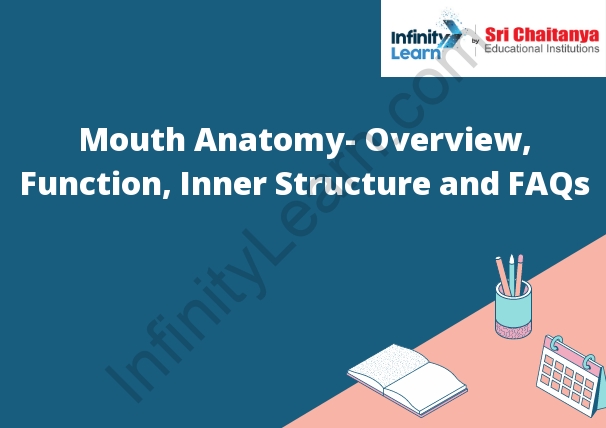Table of Contents
Introduction to the Mouth Anatomy; Brief Description about Inner Mouth Structures;
Mouth Anatomy- Overview Function
In human anatomy, the mouth is the first portion of the alimentary canal that receives food and produces saliva.[1] The oral mucosa is the mucous membrane epithelium lining the inside of the mouth.
In addition to its primary role as the beginning of the digestive system, in humans the mouth also plays a significant role in communication. While primary aspects of the voice are produced in the throat, the tongue, lips, and jaw are also needed to produce the range of sounds included in speech.
The mouth consists of two regions, the vestibule and the oral cavity proper. The mouth, normally moist, is lined with a mucous membrane, and contains the teeth. The lips mark the transition from mucous membrane to skin, which covers most of the body.
The palate is a hard, bony structure that is located in the roof of the mouth. The palate is divided into two parts: the hard palate and the

Invertebrates:
Invertebrates are animals without a backbone. They include a wide range of animals, from tiny water fleas to giant squid.
Some invertebrates, such as jellyfish and sea anemones, are born as free-swimming larvae that eventually settle down and attach themselves to a substrate. Others, such as earthworms and pill bugs, hatch from eggs and undergo a series of molts as they grow.
Invertebrates have a wide variety of body plans, and many are adapted for specific lifestyles. Some, such as corals and sponges, form colonies that can span acres of ocean floor. Others, such as octopuses and squids, are solitary hunters that use camouflage and quick reflexes to catch prey.
Invertebrates play a vital role in many ecosystems. Some, such as dung beetles and earthworms, help break down dead plant and animal material and recycle nutrients back into the soil. Others, such as bees and hummingbirds, are pollinators that help transfer pollen from one flower to another, allowing plants to reproduce.
Vertebrates:
Vertebrates are animals that have a backbone made of bone. This backbone protects the animals’ spinal cord, which is a bundle of nerves that carries messages between the brain and the rest of the body. Vertebrates include fish, amphibians, reptiles, birds, and mammals.
Human Mouth Anatomy
The mouth is a cavity in the front of the head that opens to the throat and leads to the stomach.
The mouth also contains bacteria that break down food and help to digest it.
The palate has two ridges called the uvula and the soft palate. The uvula is a small, fleshy projection that hangs down from the middle of the palate. The soft palate is a thin, fleshy membrane that extends from the back of the palate to the back of the throat.
The lower lip is larger than the upper lip.
The oral cavity is the part of the mouth that contains the teeth and the tongue. The pharynx is the part of the mouth that
Functions of the Mouth
The mouth has many important functions, including:
– Speaking
– Eating
– Drinking
– Sucking
– Breathing
– Kissing
Fun Fact
A fun fact is a piece of trivia that is interesting but not necessarily important. They can be about anything, from history to pop culture.
Mouth Anatomy- Overview Function.









